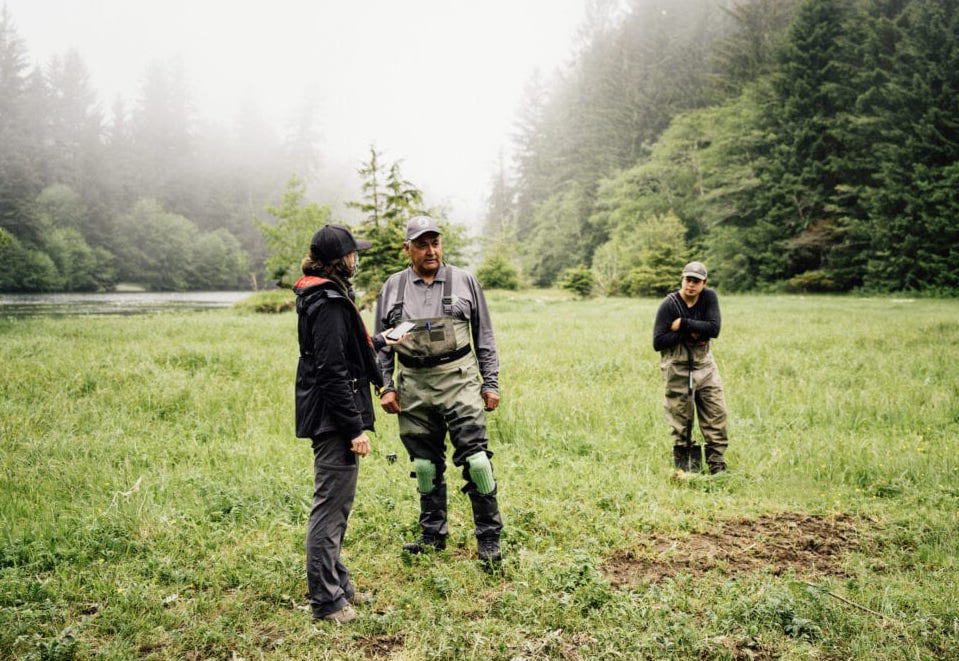
July 1, 2021: Inside the Pacheedaht Nation’s stand on Fairy Creek logging blockades
Catapulted into the spotlight amid B.C.’s new war in the woods, Pacheedaht First Nation is asserting its right to decide how resources on its territory, including old-growth forests, are managed.
Read an excerpt from the story in The Narwhal:
On a foggy June morning, Jeff Jones loads four workers wearing hip waders and five bouncy dogs into his boat at a landing in the Pacheedaht First Nation community. Jones, the Pacheedaht Chief, is as comfortable on the water as he is on land; growing up in the windswept maritime community, he fished with his father for halibut, rockfish, ling cod, salmon, “whatever bites.” As a young man, Jones moved to Victoria. But his roots tugged him back to Pacheedaht territory on southwest Vancouver Island, where he took a job as a fisheries guardian, becoming a federally certified Aboriginal Fisheries Officer. “I love the people, I love my family,” says the Chief, who has a son and daughter in their early 20s.
Along with hip waders, knee pads and gaiters, Jones wears a sleek, long-sleeved grey shirt and a baseball cap emblazoned with the Pacheedaht First Nation logo. The logo depicts a whaler and a whaling canoe. A harpoon enters one end of the logo circle and exits the other, after passing through a humpback whale. A long strand of bull kelp, traditionally used as rope, wraps around the circle, tied to the harpoon. The days when the Pacheedaht hunted humpback and gray whales, which had tasty, preferred meat and oil rich blubber, are over, at least for now. But the Pacheedaht, whose name means “people of the sea foam” in their Nitinaht language, will always be a nation moored to the sea.
Jones steers the aluminum skiff up the Gordon River, into Brown’s slough in the estuary. The water is gray-green and barely ripples. An artificial island and historic salt grass marsh rise from the water like a little hat, covered in vegetation and spruce trees. There’s no hint that eight decades ago the estuary was home to a massive log sort yard — the province’s largest — until you look at the LIDAR maps the Chief’s wife, Helen Jones, the Pacheedaht fisheries manager, shows us on a tablet. The maps reveal where the land and water used to be before extensive dredging took place and dikes were constructed to facilitate the water transport of red and yellow cedar, Douglas fir and hemlock trees hauled from nearby valleys. Dredging for historic logging operations destroyed salt grass marshes that nurtured juvenile salmon, contributing to the decline of a primary food source for the Pacheedaht. Now the nation aims to rebuild populations of all five salmon species, starting in the delta where the San Juan and Gordon Rivers wend from east and north to merge in the sheltered waters of the Pacific.
Read the full story in The Narwhal
